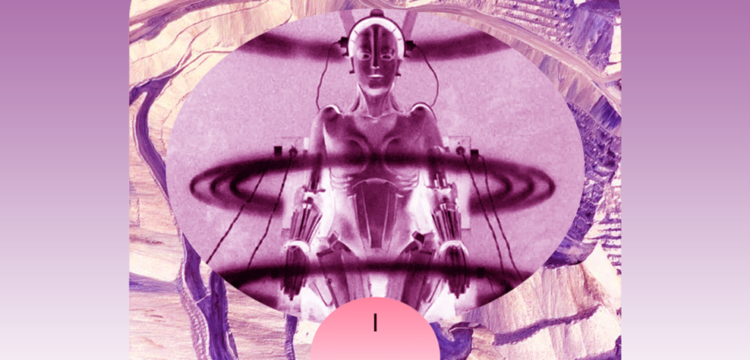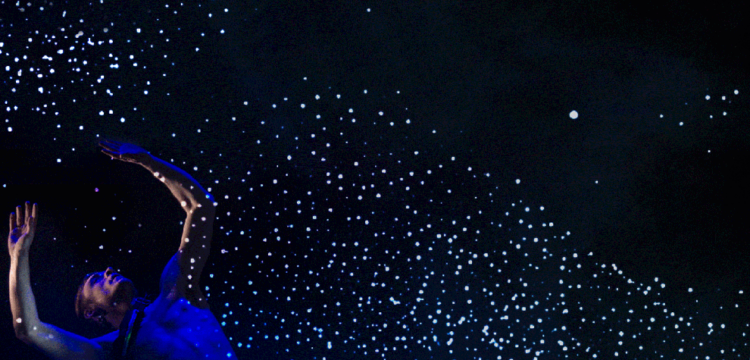AI as Experience of the Limit
How do we redefine the boundaries of our experience with technology?
With the title Re:define the boundaries, in October 2020 opened the second edition of the Re:Humanism Art Prize, a program more than an award, dedicated to investigating the complex implications that regulate our relationship with artificial intelligence technologies.
If the first edition, launched in 2018, was developed in a context in which, for the first time, the world became aware of the criticalities that such a promising—but also so pervasive—technology could represent in terms of discrimination, privacy violations and environmental impact, the second edition, building upon this awareness, broadens horizons and offers new possible approaches to the race for scientific progress. This edition of Re:Humanism stemmed precisely from the awareness that systemic mutations due to AI technologies are not material for nostalgic ruminations, on the contrary, they represent phenomena to be read in all their radical complexity as an opportunity to question some of the acquired categories that concern our very human being.
First of all, it must be taken into account that Re:Humanism 2 was born in a very precise context, namely that of the pandemic, on the one hand as an inevitable moment of reflection against an health but also economic and social crisis, on the other as a prompt response, a desire to go beyond the criticality of the moment offering artists the opportunity to have their voice heard. This scenario—that is far from being neutral—becomes the perimeter where to place new reflections, relations, and approaches. For this reason and unlike the former, the second edition proposed to the artists, in addition to wanting to redefine the boundaries of our experience with the technological medium itself, five issues within as many thematic areas.
First, there is the issue of body and identity, as concepts that become increasingly difficult to include in a single framework and that technologies contribute to make fluid and changeable. The first edition had already stressed the need to relate to another type of identity that rises and develops in the network and feeds the actions and conversations that we generate, sometimes influencing our choices and cultural expressions. Behind these actions, there is an infrastructure of algorithms that translate them into statistical data, and then give them back to us in the form of similar experiences, closed universes, the so-called echo chambers, thus eliminating our perception of diversity. Moreover, the relationship with the body and the bodies that the pandemic has helped to define in terms of immunity, creating binary categories such as “health” and “disease” and taking away from the body itself its central role in the construction of relational dynamics. The technological interfaces thus become the new bodies within which relationships move, through which the gazes, mediated by the webcam, meet. The glossy filters of social networks allow us to show ourselves not as we are but as we want to be, however sometimes adapting to predetermined models. Sexuality also becomes digital, where distancing prevents body exchanges, technological pleasure tools and virtual worlds open the way to new unexplored desires.
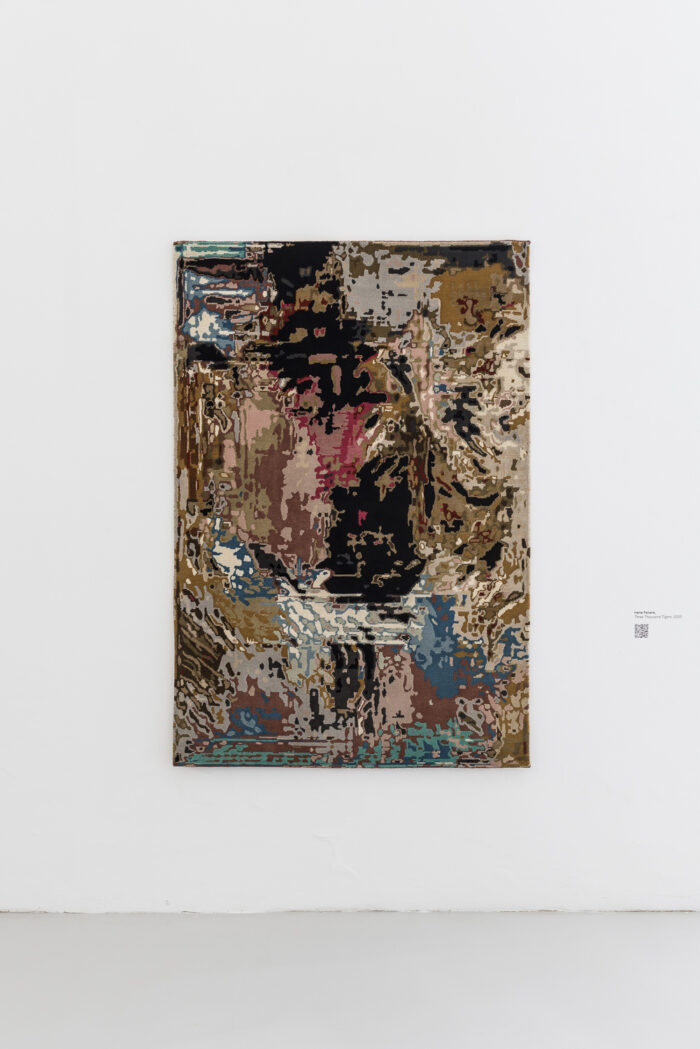
Inevitable, in this regard, also a reflection on the ecology and the future of our planet questioned by a climate crisis so far perceived more as a hyperobject (as defined by Timothy Morton), a phenomenon whose vastness prevents us from a global vision but of which we perceive the consequences. With the pandemic, this perception has been amplified by confronting us with the direct consequences of our actions. To this is added the advancement of scientific research that once again questions our hegemony in terms of species by privileging a no longer anthropocentric approach. To echo these discoveries are the philosophical theories of authors such as Donna Haraway, Rosi Braidotti or Bruno Latour who see in the birth of new multi-species and posthuman relationships the only possible future.
The boundaries of such explorations extend to the inert or inorganic matter whose classifications today appear incomplete to the point of needing to be renegotiated in terms of belonging to concepts such as life, intelligence, and adaptation to the environment. To explore these boundaries is therefore to question a clear distinction between human and artificial, that, in the perspective of an increasingly present artificial intelligence in terms of infrastructure and hardware, prompts us to ask ourselves how we will relate in the near future to these “entities”. In this respect, the perspectives are multiple and refers in a very concrete way also to the field of design, pushing designers to create ethically sustainable interfaces and to wonder how they can relate to a world that is changing; we’re in the field of AI anthropology.
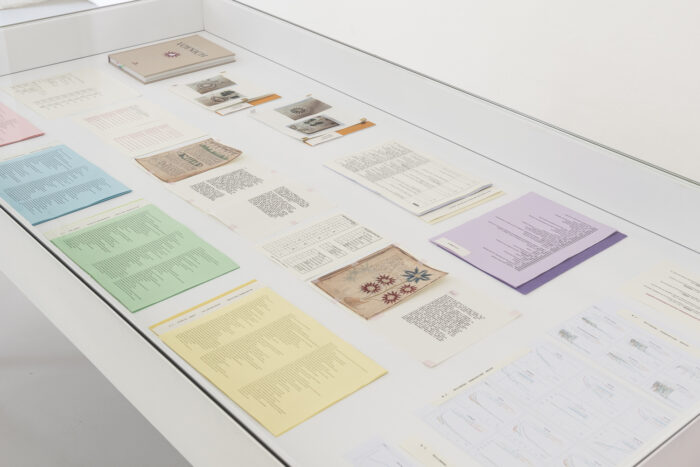
Social and political issues related to uses and abuses remain open, if the first edition questioned the failure of Tay, the chatbot released by Microsoft in 2016 in order to simulate teenagers’ conversations on Twitter and immediately suspended due to its racist and sexist drifts, and the Cambridge Analytica scandal, Re:Humanism 2 manifests itself after the decision of many governments to ban surveillance and facial recognition technologies and a growing movement for the assertion of the rights of minorities and all marginalized categories. Behind the promise of developing ethical algorithms, lies the danger of a crystallization of these principles that are fluid matter, subject to different mutations.
Finally, the second edition leaves the field open to visionary explorations on the developments of machine learning, robotics, and computer vision technologies. The great questions on which the human being has been projecting dreams and fears for centuries come back; the image of an autonomous consciousness capable of replacing many of the activities so far prerogative of the human is not only a science fiction plot, but it represents a tangible possibility that once again pushes us to question ourselves on how to rethink our future in relation to work and to life organization. What has happened in these two years is a strong awareness of how behind the fear of being replaced by thinking machines and the consequent promise of emancipation from alien work, once again lie low-cost jobs, often assigned to disadvantaged groups whose new activities are no less degraded than those they have replaced. However, the gaze of the machine continues to fascinate artists who use neural networks’ potential to inform the future and to generate tools useful for sociality and sustainability. Through the GAN (Generative Adversarial Network) a new aesthetic is taking hold, increasingly present in new cultural scenarios, from music to cinema, from television to contemporary art.

It is precisely in this latter context that we are witnessing the gradual establishment of such technologies, previously used only as a function of a semiotic analysis of the medium, now used pursuant to the transmission of a message and in response to changes in society.
Art reflects on the concept of interface, bringing it to its extreme consequences, sometimes enhancing its aesthetics, other times hiding it behind different levels of reading.
Artists use a speculative approach that sees in technology and its impacts the potential for a re-appropriation of methods and processes to imagine new possible trajectories. The speculations about the future of the planet (and its inhabitants) are the protagonists of this edition, declined through multiple gazes. The Entangled Others with Beneath the neural waves 2.0, indeed, invite us to rethink the coexistence on the planet through the study of complex ecosystems such as those of coral reefs and through the use of a neural network. New interweaving of species is articulated within this aquarium whose alien features invite us to imagine new symbiosis between species, bringing to the attention of the public the capacity of natural ecosystems to generate forms of coexistence economically and socially beneficial for all their components.
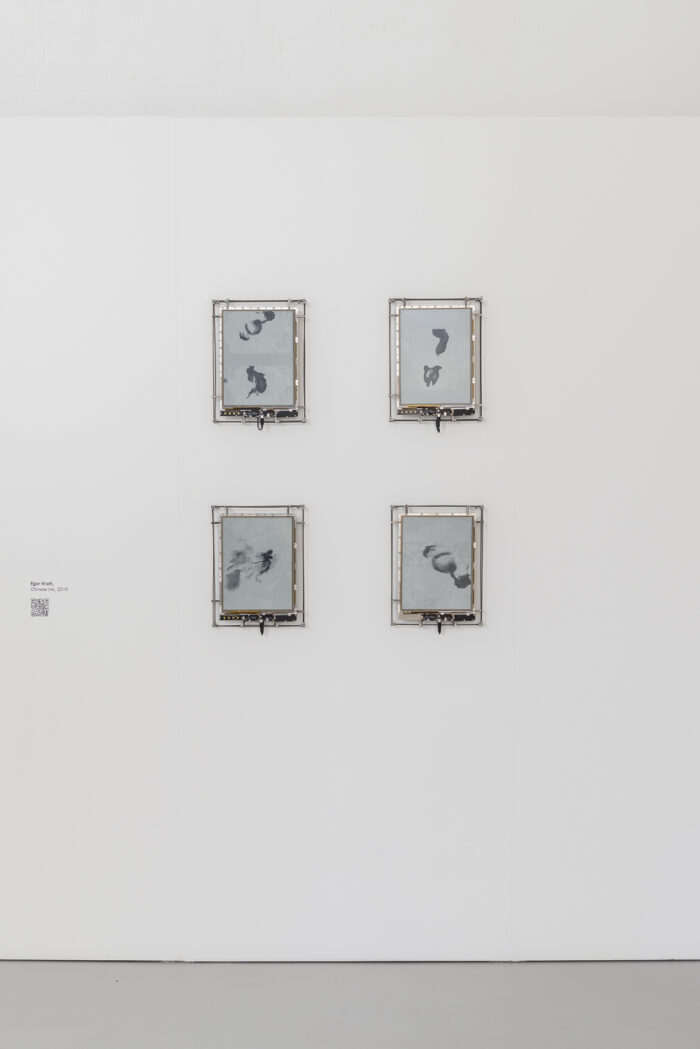
Irene Fenara in Three Thousand Tigers relates the phenomenon of the extinction of tigers with the idea of their digital preservation. However, three thousand tigers (currently estimated number of actual specimens still in existence) represent a small number for the composition of a dataset for the machine learning system training. This quantitative difference conceals the profound distinction between an epistemological datum and the linguistic universe that accompanies it. Precisely the fascination with this majestic animal has progressively involved its elimination, to the point that the artist chooses to transform the results of this path into a series of precious tapestries made by Indian craftsmen that testify as human intervention has a direct role in the gradual disappearance of this animal.
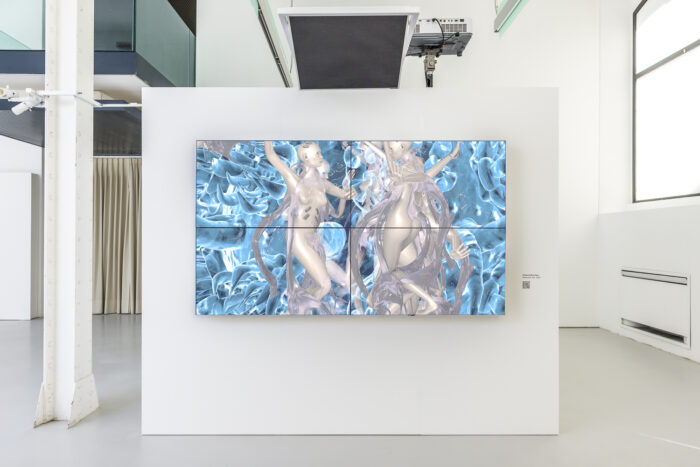
Yuguang Zhang’s work, (Non-)Human: The Moving Bedsheet, is a delicate reflection on the relationship that binds us to everyday objects, with many of them we interact directly as when we rub our face on a towel or we abandon ourselves on a bed, taking different poses, thus creating an intimate relationship with the object. Through a dataset of images of the poses taken during sleep, the artist trains a neural network to generate further articulations in space and then transmit these movements directly to the surface of the bed itself. Following an imaginary animist, the artist associates the properly human movement to the object, trying to move between that fine line that distinguishes man from artifice, the form of life from inorganic matter and thus embodying that concept of anthropology of artificial intelligence that the most recent studies aim to outline.
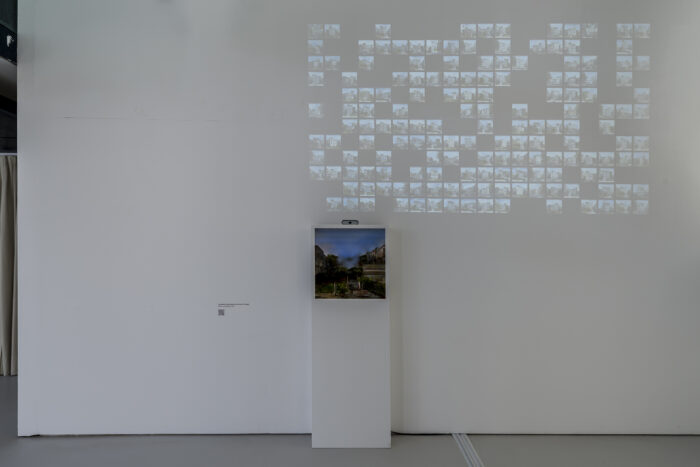
Upon the fine line between human and artificial existence is also Carola Bonfili’s work, that in The Flute-Singing uses literary suggestions from the texts of Ovid’s Metamorphoses to train a GPT system of generating texts to produce an artificial script, within whose virtual scenario a creature with alien features lives and moves, questioning its own consciousness. The work, entirely realized in CGI (computer-generated imagery), alludes to a not very distant future in which artificial simulations will represent autonomous forms of existence but at the same time invites us to reflect on the creative potential of narrative languages, identifying technology as an effective tool to expand the boundaries of such narratives, bringing back to the virtual dimension some feelings of estrangement proper to the human experience.
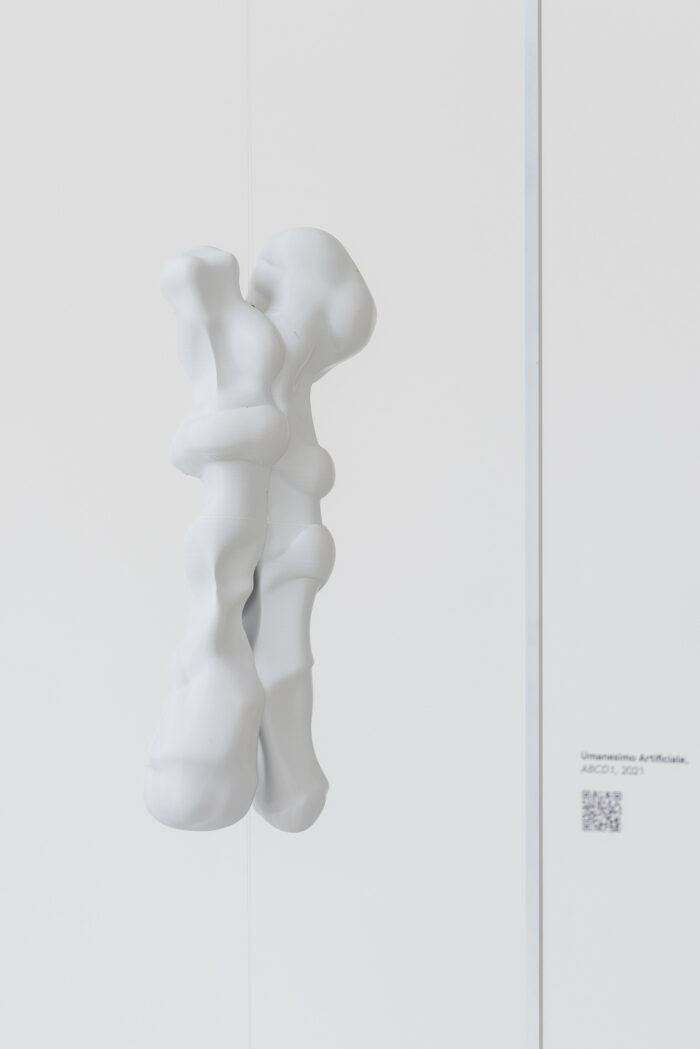
The project of the collective Numero Cromatico, which has long been involved in creating a bridge between neuroscientific discoveries and the ways in which works of art are used and assimilated, is also at the base of literary suggestions. Epitaphs For The Human Artist was developed from the study of the poetic language contained in the epitaphs, spontaneous community forms of production of a deceased memory, to train a neural network to the automatic generation of such texts. Often difficult to understand, these compositions highlight their artificial nature, without referent. The words contained in these texts, randomly associated with different colors, seem to prevail over the compositional structure, opening as links or windows to new possible interpretative scenarios. The work that provocatively alludes to the death of the human artist, makes us reflect on the creative potential of these technologies and at the same time emphasizes the impossibility of adherence to a structure of meaning based on experience.
Egor Kraft’s work, Chinese Ink, also stems from the analysis of a traditional creative language like that of ancient Chinese painting which, deprived of its figurative subjects, is used to train a GAN to produce a dozen images per second, which also simulate the effect of ink on blotting paper in gestures. Through this technological expedient the artist animates this traditional technique and invites us to reflect upon how these traditions survive and change with the advancement of technological progress.

Mariagrazia Pontorno in Super Hu.Fo* Voynich engages in the utopian and visionary attempt to translate the ancient Voynich code, a small manuscript attributed to the fifteenth century, whose interpretation has been an object of interest for many scholars including Alan Turing. Through the neural networks, Pontorno identifies forms of relevance between the mysterious and fascinating illustrations contained in the text and the recurrence of characters that reveal esoteric approaches to nature and the creatures that inhabit it. AI intervention, although present in the work, is distorted by some free interpretations that the artist chooses to include in the training dataset in order to obtain a hybrid translation, the result of the collaboration between natural and artificial language.
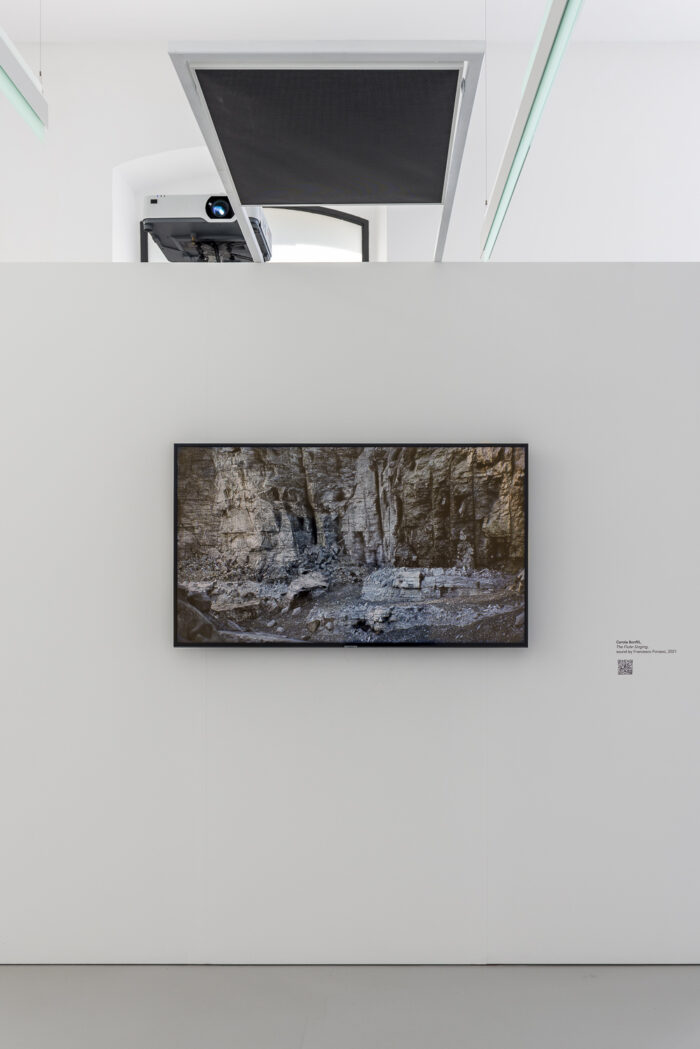
The work of the duo Christoforetti-El Sayah, starts from the Renaissance architectural tradition and the treatises of Leon Battista Alberti to reconfigure the individual as an integral part of the concept of contemporary urbanism. In Body As Building, machine learning is used by the two artists to capture the faces of the spectators and merge them with images of modern architecture, proposing a new horizontal approach to the phenomenon of construction and creating a parallel between the concept of body and that of home as forms of contemporary living.
The body also relates with the work of the collective Umanesimo Artificiale, whose research starts from the biographical data, a genetic alteration of the DNA (in particular the ABCD1 gene) from which is affected one of the group’s members and which manifests as a neurological disease. The artists decide to translate this complex alteration in sound with the help of AI algorithms. The result are two complex 3D-printed sculptures in which “healthy” and “mutated” DNA are articulated in space by emitting different sound frequencies. The work represents a sophisticated and significant experience of data visualization but also pushes us to rethink the categories of health and disease by offering all the power and variety of the manifestations of nature.
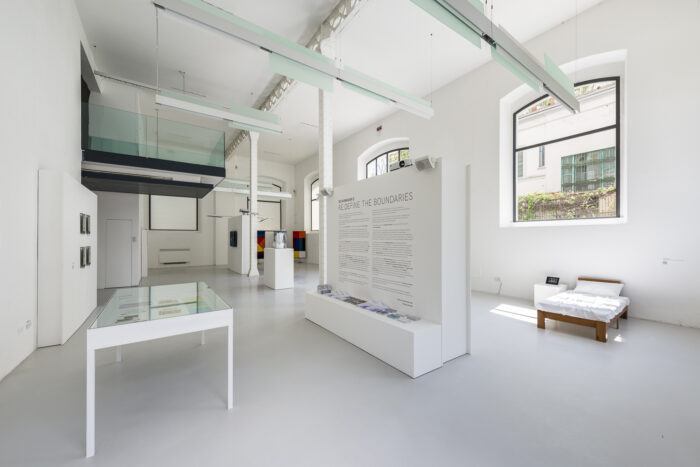
Lastly, bodies and different forms of sexuality animate the work of Johanna Bruckner who in Molecular Sex investigates the new modalities of interspecies relationship that, based mainly on the theories of Karen Barad, represent new possible approaches to ecological complexity. The American scholar sees in quantum matter a changeable and performative approach equal to that of queer categories that identify bodies and gender identities. By multiplying points of view and manifesting hybrid forms of desire, Bruckner invites us to open ourselves to new approaches to the body, identity, and desire, using artificial intelligence as a tool to amplify imaginative potential throughout learning and simulation.
The exhibition path thus opens to multiple different visions, highlighting how artificial intelligence is no longer solely attributable to an imaginary made of screens, cables, and lithium batteries but rather to something that affects us much more closely, the implications of which are not always directly identifiable and for which a constant, critical, and speculative commitment is required.


